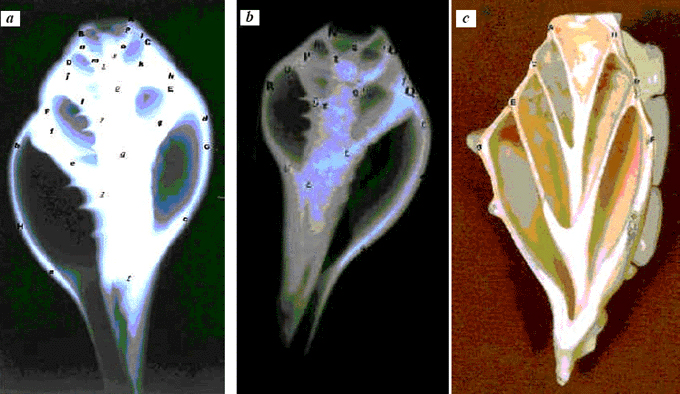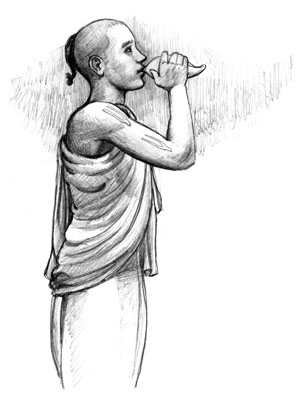
|
|
|
|
BY: SUN STAFF

Jul 03, 2011 — CANADA (SUN) — A study of the historical, spiritual and cultural elements of Vedic design. Our discussion on the Conch began with a description from Bhagavad-gita As It Is of the battlefield at Kurukshetra, with Krsna on His transcendental shankha Pancajanya, Arjuna on Devadatta, and Bhima on his Paundra conch calling the battle to begin. The sound vibration emitted by these three divine horns is beyond the scope of imagination. When considering the conch from the standpoint of design, one has to begin by looking at the internal structure that enables it to produce such amazing sound. Many studies have been conducted, both by scientists and transcendentalists, of the sacred geometry involved in the conch's design. We typically see both Conch and Nautilus shells illustrated in sacred geometry studies, and the two are often paired together because of their similarities in construction. In fact, illustrations of the Conch and Nautilus are often used to describe the 'Golden Mean', a mathematical abstraction that is present, clearly and easily recognizable as a pattern of unfolding steps -- including the growth of living things. For example, the Nautilus shell grows larger on each spiral according to this formula, and the Sunflower's 55 clockwise spirals are arranged in the same mathematical proportion. Likewise, the internal structure of the Conch can be measured and reduced to a perfect mathematical formula.

Figure 1 – Conch Cross-sections How this mathematical reality relates to the divine sound produced by the conch – what to speak of the transcendental vibration of conches like Sri Krsna's Pancajanya – has long been an object of fascination. In a study conducted by Saroj Kumar Rath and P.C. Naik of the Department of Physics at Talcher College in Keonjhar, the two produced conclusive evidence of the presence of the Fibonacci sequence in the conch's design. Some interesting excerpts from their paper follow: "The conch shell has been used by various cultures on diverse occasions through the ages. Particularly in India it has been described in the Puranas and epics and is being used almost in all Indian societies during auspicious occasions. However, the conch shell as a musical instrument has not been investigated as yet. Bhat and coworkers have reported the X-ray tomographic picture and the conch sound spectrum in recent past only. In order to study the acoustics of the conch shell, the study of its structure is important. Here, we present the results of an investigation on this aspect. Figure 1 a–c [above] shows the X-ray tomograph of conch shells and a photograph of a dissected shell. It can be seen that the structure grows in spiral both in the transverse and longitudinal directions. Our measurement of the parameters in the structure satisfy the celebrated Fibonacci patterns found abundantly in nature. The parameters, when judiciously chosen, fairly furnish the Fibonacci pattern and golden ratio." Rath and Naik also describe the difference between the internal geometry of the Conch and the Nautilus (snail). Referring to the X-ray and cross-section images shown above, they write: "But morphological structure of the conch shell is different from a snail shell. The snail shell is approximately a two-dimensional spiral. In case of the conch shell, the spiral coils around a central axis called the columella or central pillar of the shell. Figure 1 a–c clearly shows that the cavity around the central pillar grows both in the horizontal and vertical directions." While findings may differ depending upon the species of Conch one studies, the general rule established by this study is that the spiral structure of the Conch clearly exhibits the Fibonacci pattern, or the 'golden rations'. And clearly, it is that symmetry which causes the Conch to produce such amazing sound vibrations. 
| |